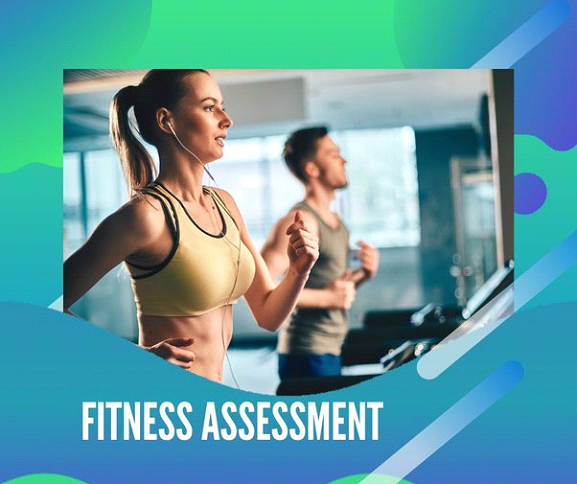In any case, a Campbelltown Gym Free Trial Gyms Campbelltown fitness assessment is a great way to measure where a new member is on their fitness journey. Real-life data on a person’s fitness level drives motivation as it gives them a baseline to work from. People like to see numbers and it gives them a clear idea of where they are at and, more importantly, where they need to go. A really worthwhile assessment goes beyond blanket tests and guesses. The best Campbelltown Gym gyms and studios around use data-driven, in-depth and highly personalized assessments to determine what exactly the member needs to achieve.
What is a Campbelltown Gym Fitness Assessment?
A Campbelltown Gym fitness assessment evaluates your overall health and physical fitness levels through a series of tests. There could be several purposes for fitness testing, such as:
- Measuring the current fitness levels when a person joins a gym
- Tracking the progress of the members after a period of time in a new gym
- Determining fitness to participate in an organization that requires vigorous, physical activity. For example, the military or police force.
- Determining your general health.
For this article, we will mainly focus on an assessment that you can use as a fitness business owner. The goal of these types of assessments is to come up with the right exercise program for your members. There a couple of key things to consider before creating your assessment which we will go through next.
Things to Consider Before Giving a Campbelltown Gym Free Trial Gyms Campbelltown Fitness Assessment
There are a few things to consider when you first sit down to plan out your fitness assessment. You need to factor in their age, injury history, and what their ultimate goals are. All of these need to be carefully considered so you the best results possible for the member.
As well as that you need to remember that the assessments need to be highly individualized so members have the best springboard possible to get the results they want. Let’s take a closer look at the factors to consider
The Persons Age
Factoring in a person’s age gives you an idea of the level and intensity the member should perform. The WHO has based the amount of physical activity they recommend on three age groups:
- 5-17 years — At least 60 minutes per day of moderate to vigorous intensity.
- 18-64 years — At least 150 minutes of moderate-intensity throughout the week.
- 65+ years — At least 150 minutes of moderate-intensity throughout the week.
When administering a fitness assessment, consider a closer look at the age of the individual in question. This will help create a more individualized plan, which in turn increases the likelihood that the client will stick it through.
Injury History
Unfortunately, it’s a fact of life that people will likely pick up injuries in their lifetime. Exercise will always be at a certain intensity so there is always a risk someone could aggravate an old injury or pick up a new one.
There’s a lot of value in putting together a questionnaire at the very beginning of the process to figure out exactly the injury history of the person. This way you can tailor the assessment and the following program to ensure they get the right results – without exposing them to injury
Goals They Want to Hit
A person joins a gym for one thing – results. Again using a questionnaire, either during the sales process or when the person joins, is a fantastic way of gathering key information such as goals.
When you know what the person wants to achieve, be it weight loss, muscle gain or conditioning for a sport, you can then create a suitable and accurate baseline for them to begin their journey.
5 Elements of a Great Campbelltown Gym Fitness Assessment
When you know what the person wants to achieve, be it weight loss, muscle gain or conditioning for a sport, you can then create a suitable and accurate baseline for them to begin their journey.
Using the factors we have discussed, you would then create a fitness assessment using the following five elements: health evaluation, body composition tests, cardiovascular endurance tests, body strength tests, and joint flexibility tests.
These tests are made up of a series of exercises to measure your overall health, current fitness levels, or progress after following through with a fitness plan.
1. Campbelltown Gym Health Evaluation
A great fitness assessment begins with a health evaluation. Be open about all relevant health-related information. In some cases, it might actually be wise to get your doctor’s approval before following through with a fitness assessment.
- Standing height — Standing height is measured barefooted, standing straight and upright. It helps determine whether you’re experiencing adequate, healthy growth, versus whether you’re developing any kind of bone loss.
- Bodyweight — Taken together with standing height, your body weight can determine your body mass index (BMI). BMI can give an idea of your health risks, if any, and whether you are overweight. It is by no means a completely accurate tool but taken together with other information gained during your general health evaluation, it comes in very handy.
- Resting heart rate (RHR) — RHR refers to your heart beat per minute (BPM) while at rest. This is best done first thing in the morning, while still in bed. It is a great indicator of heart health. An RHR of 60 – 100 BPM is normal for adults, but it’s best to keep it under 90 BPM.
2. Body Composition
Your entire body composition is more relevant than body weight measurement. Your body composition is the proportion of your body fat and your non-fat mass (bones, muscles, and organs). It helps determine your health and fitness levels by indicating your body fat percentage. Less body fat and higher non-fat mass indicates a healthy body composition.

